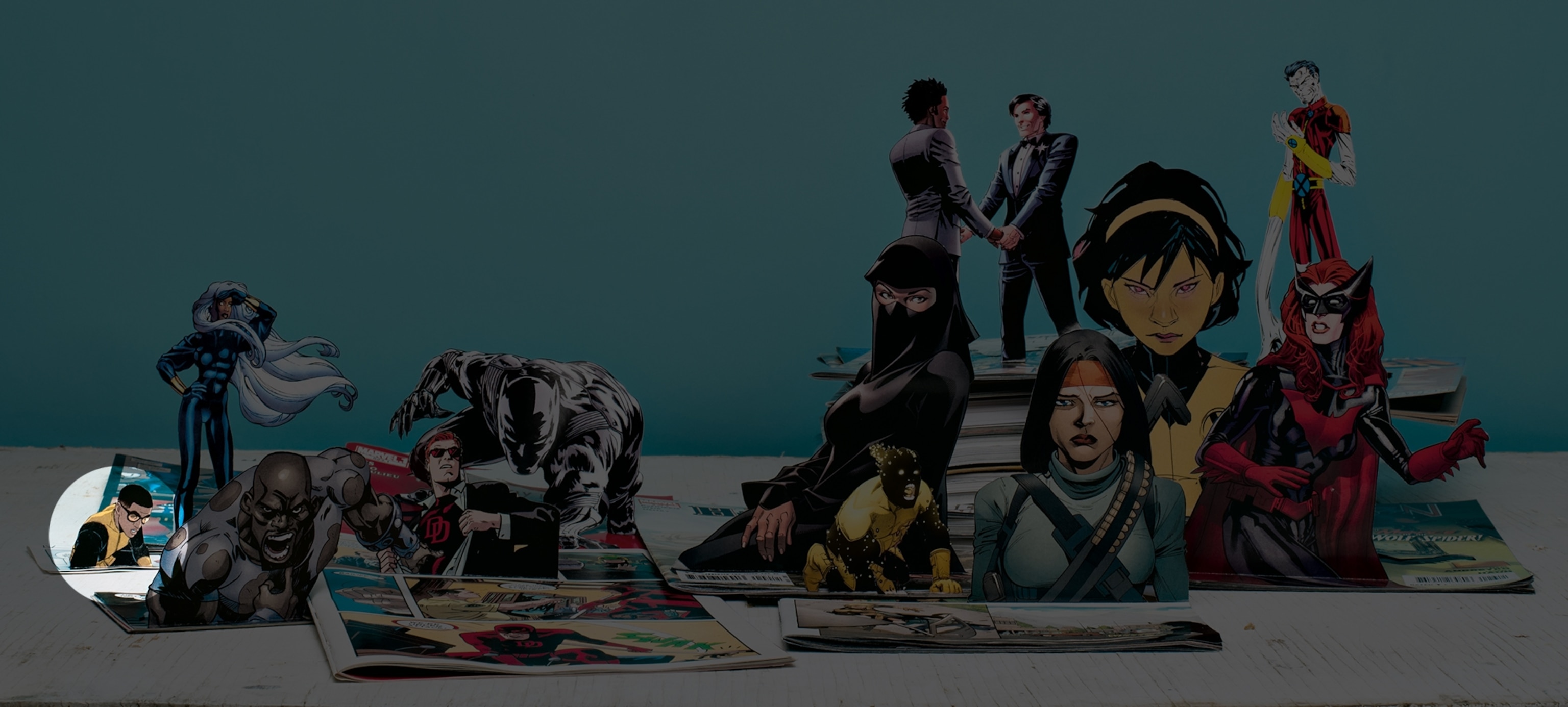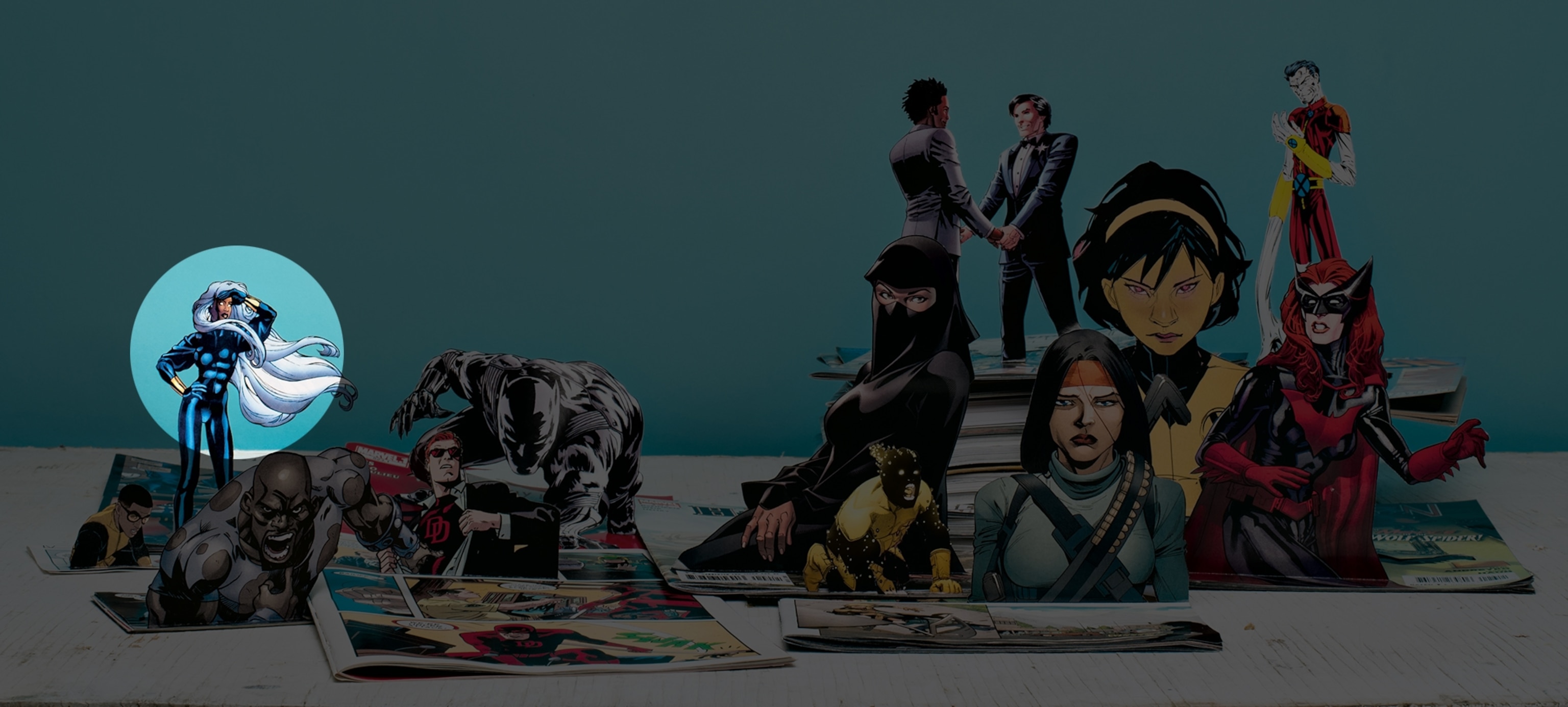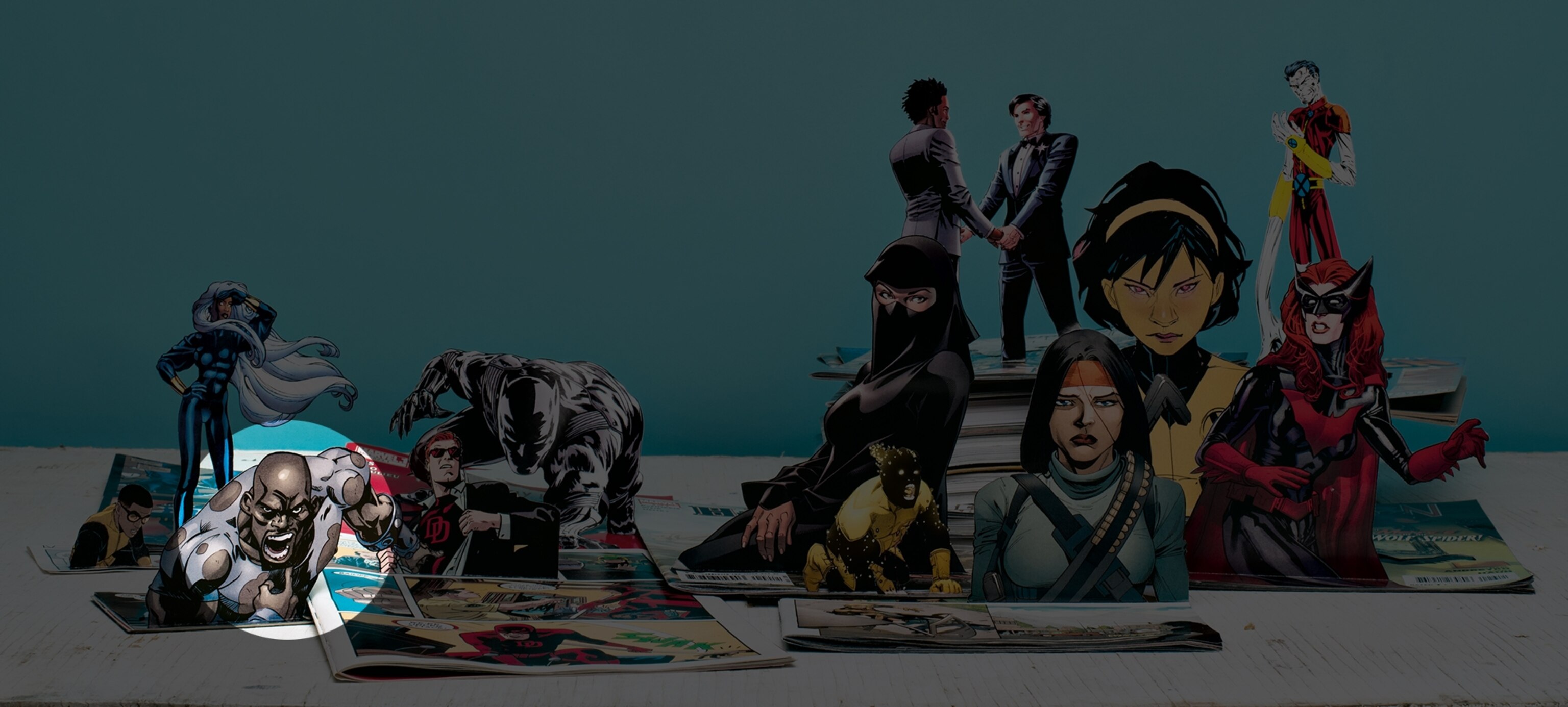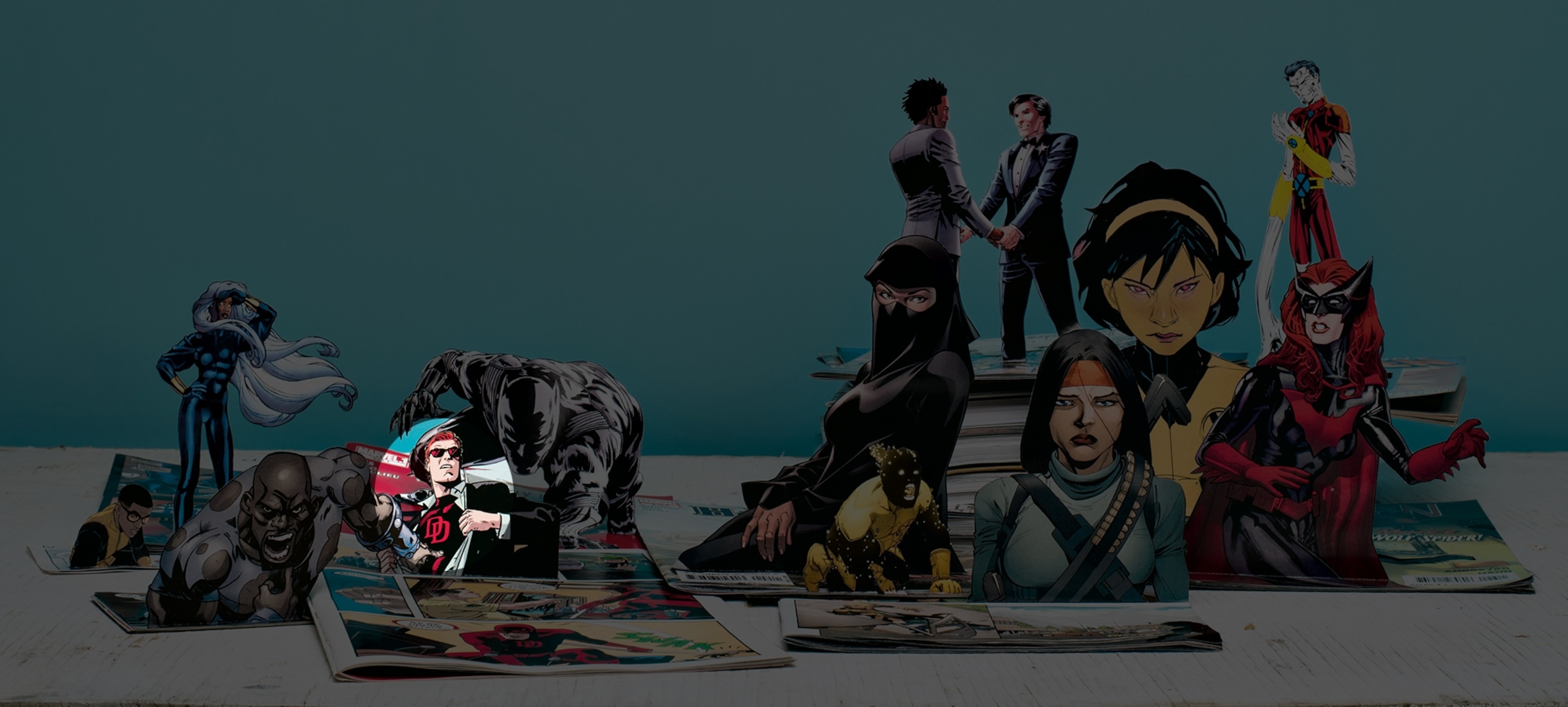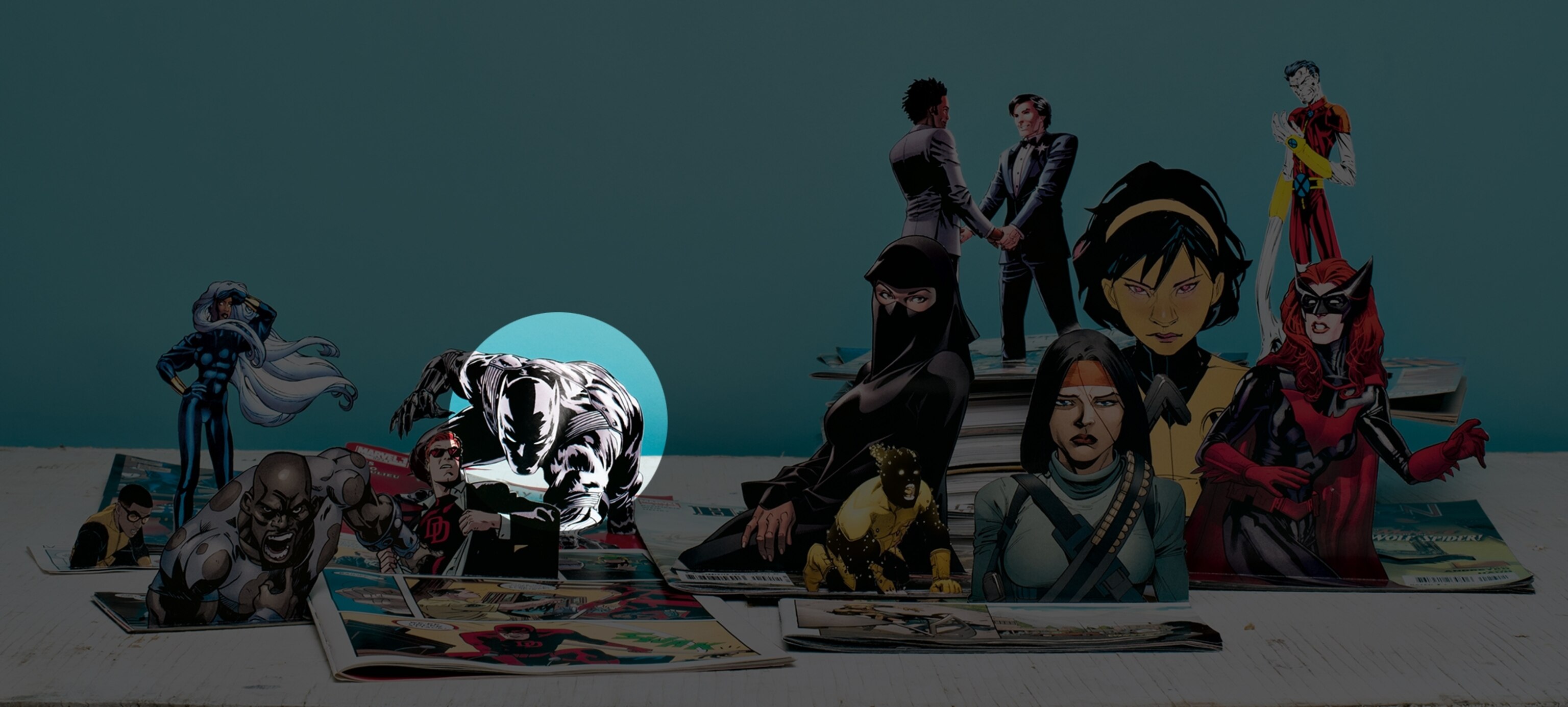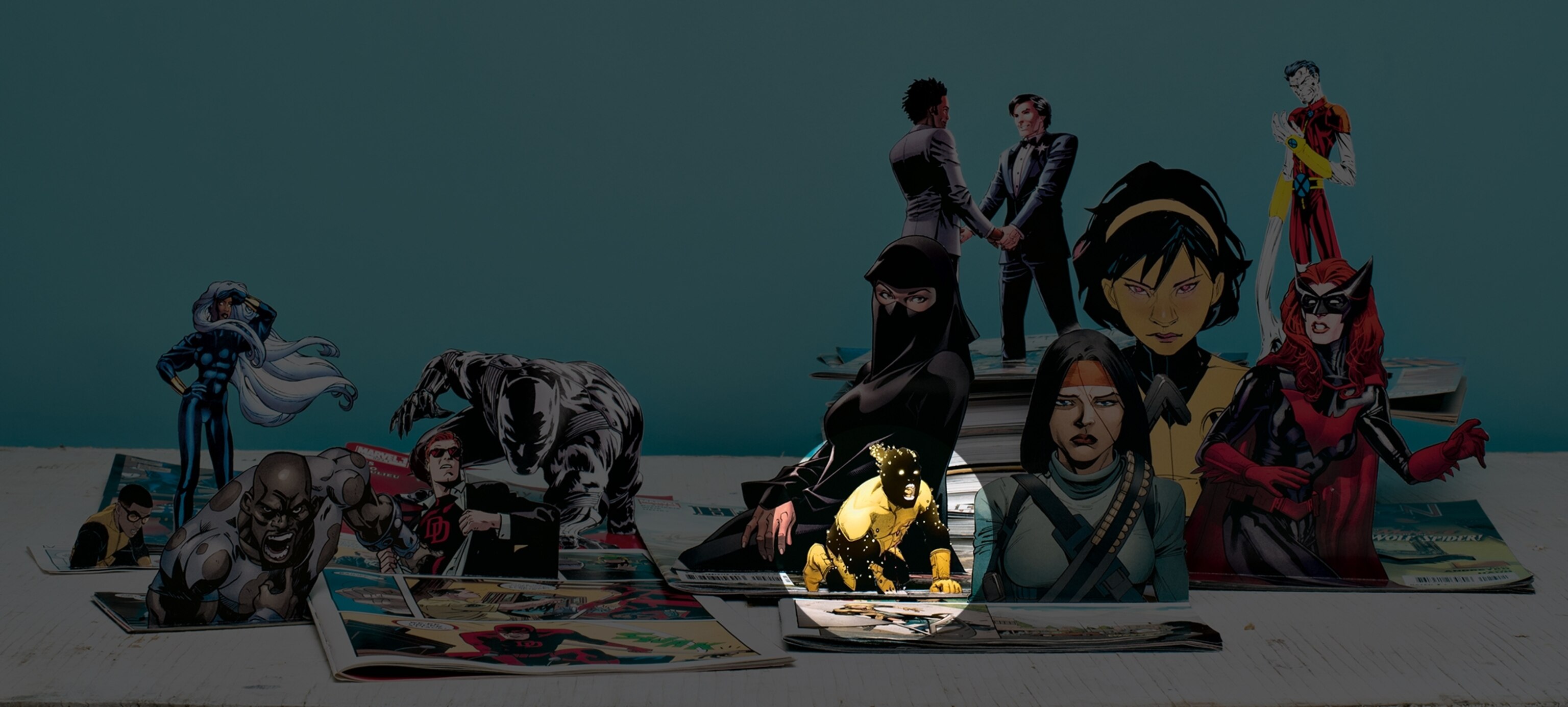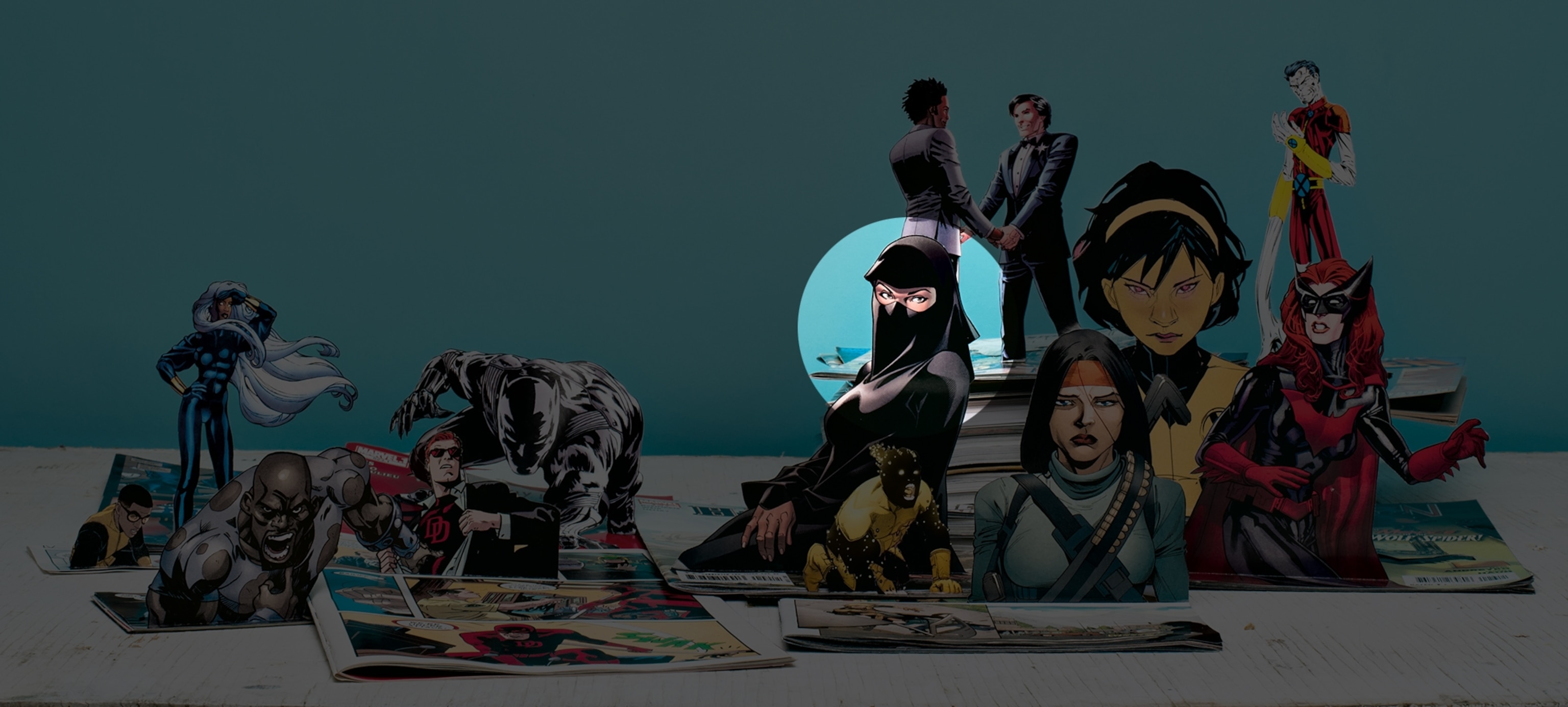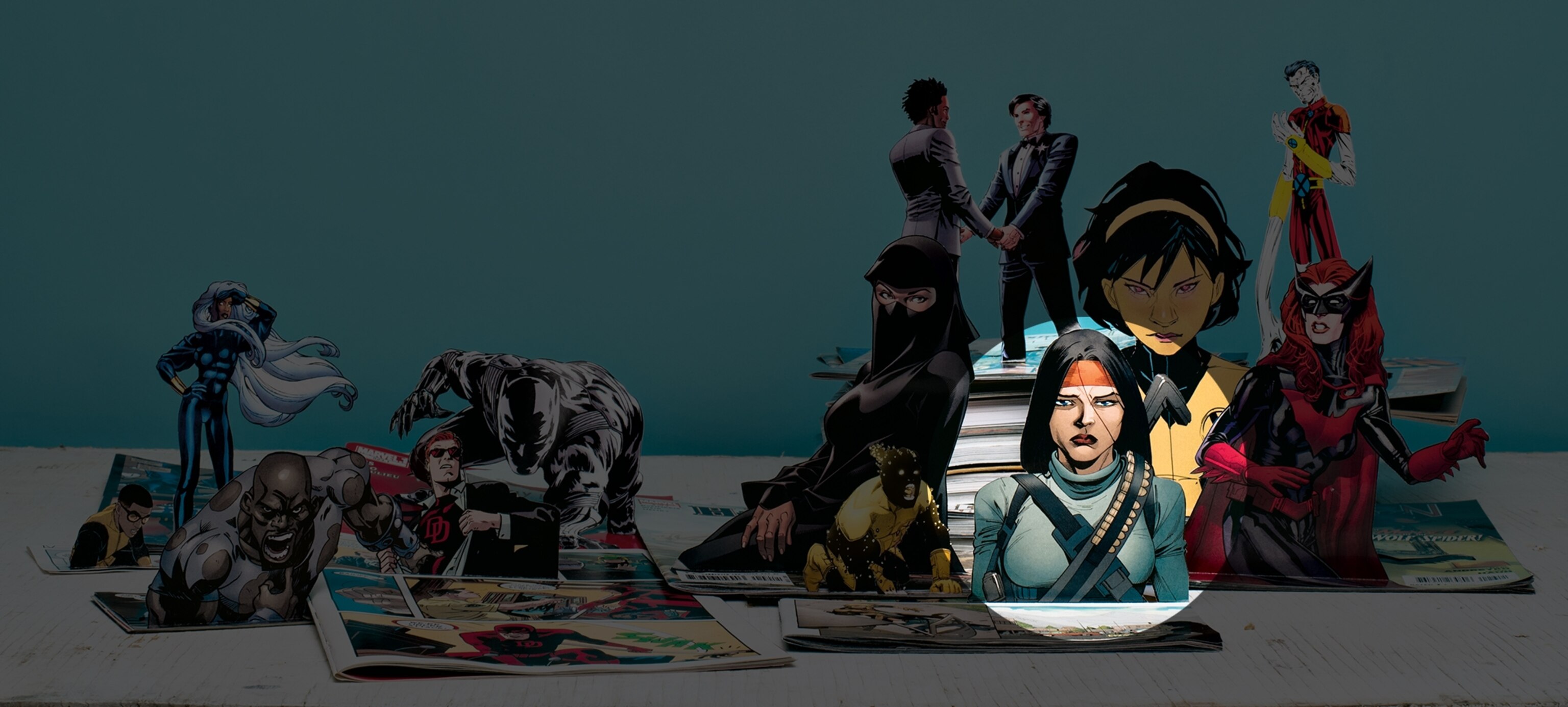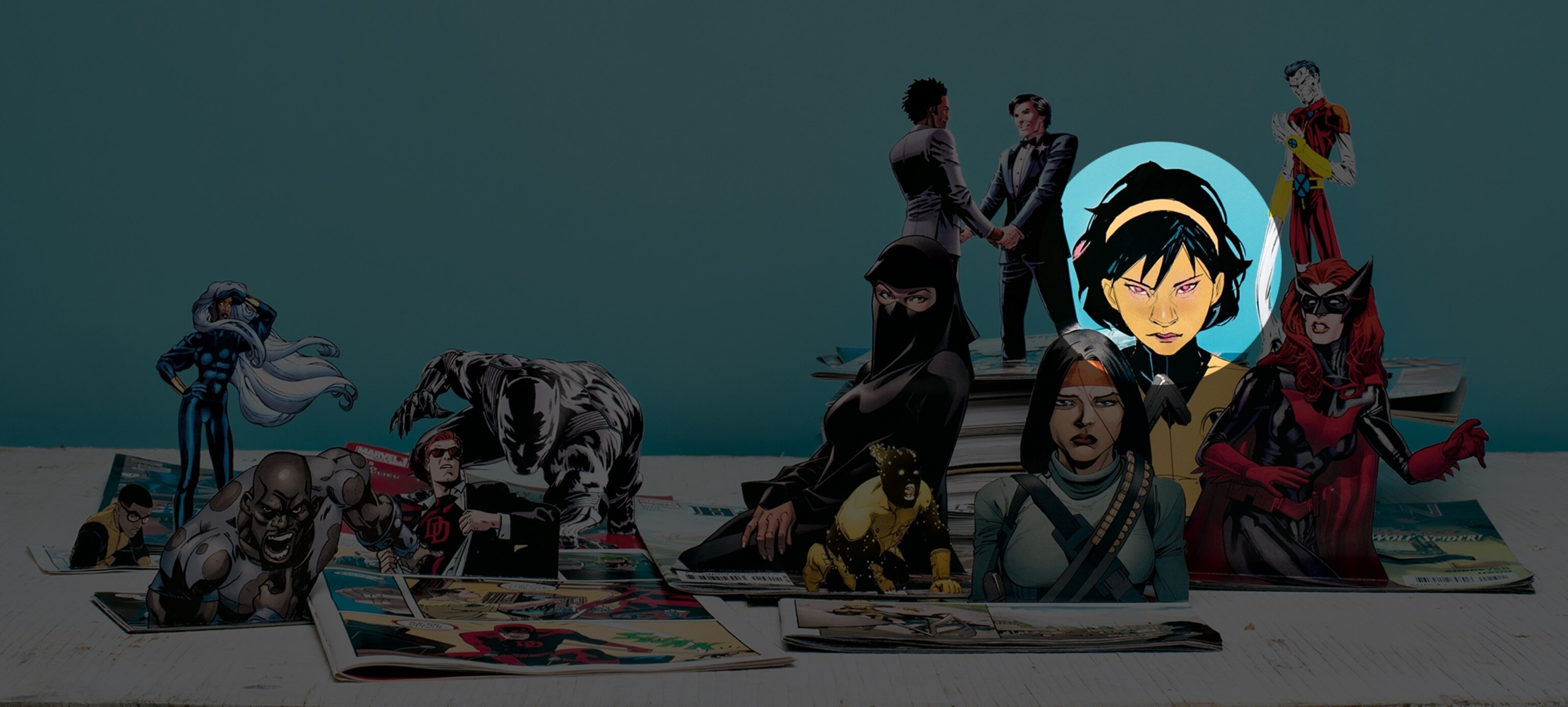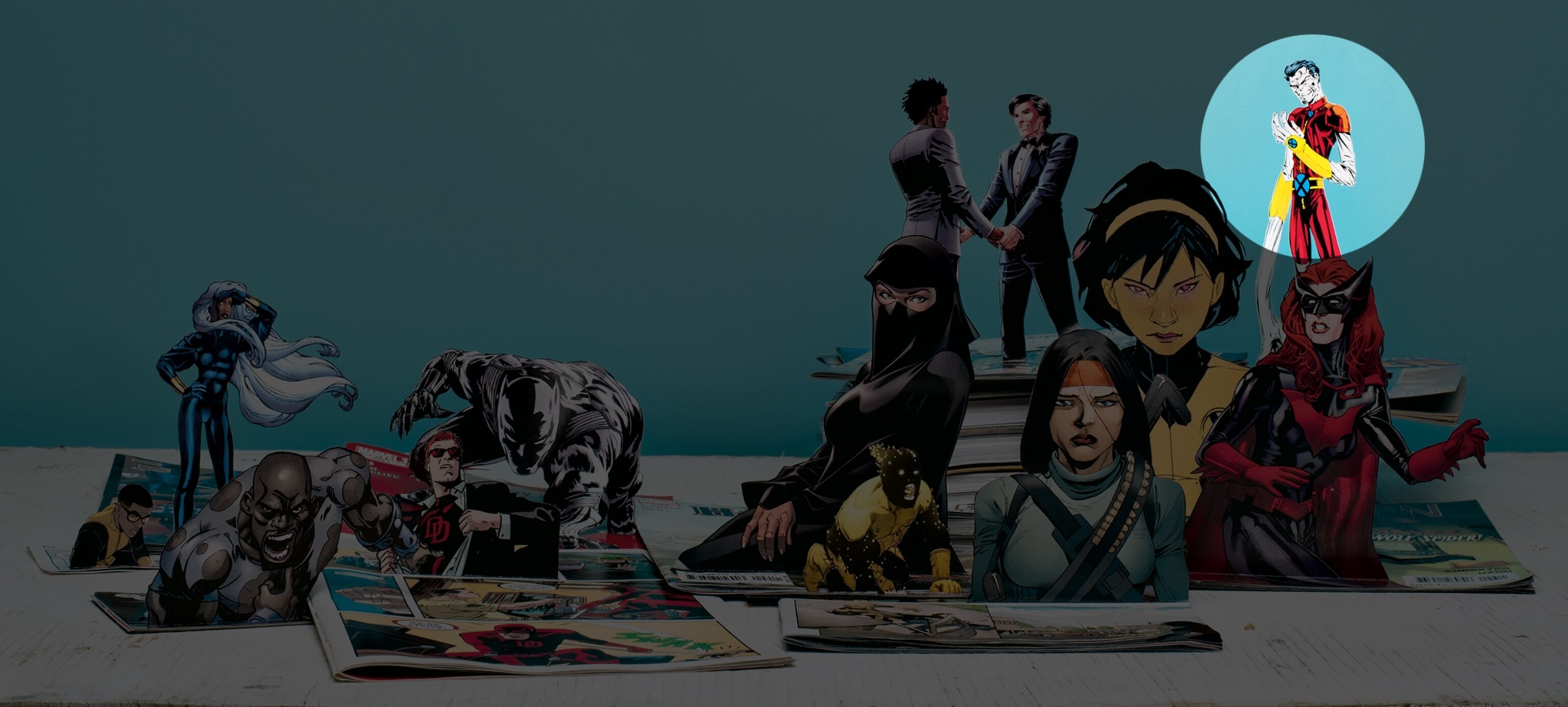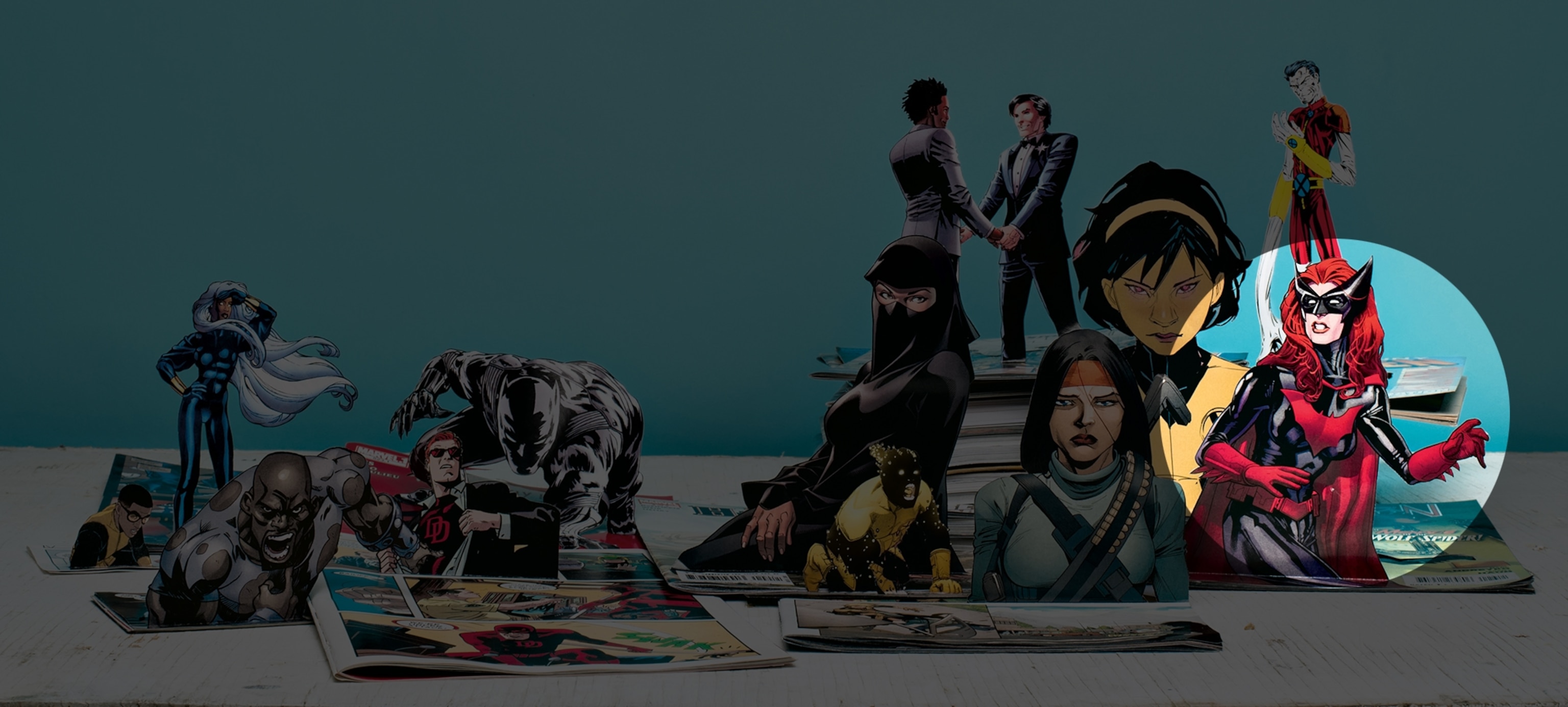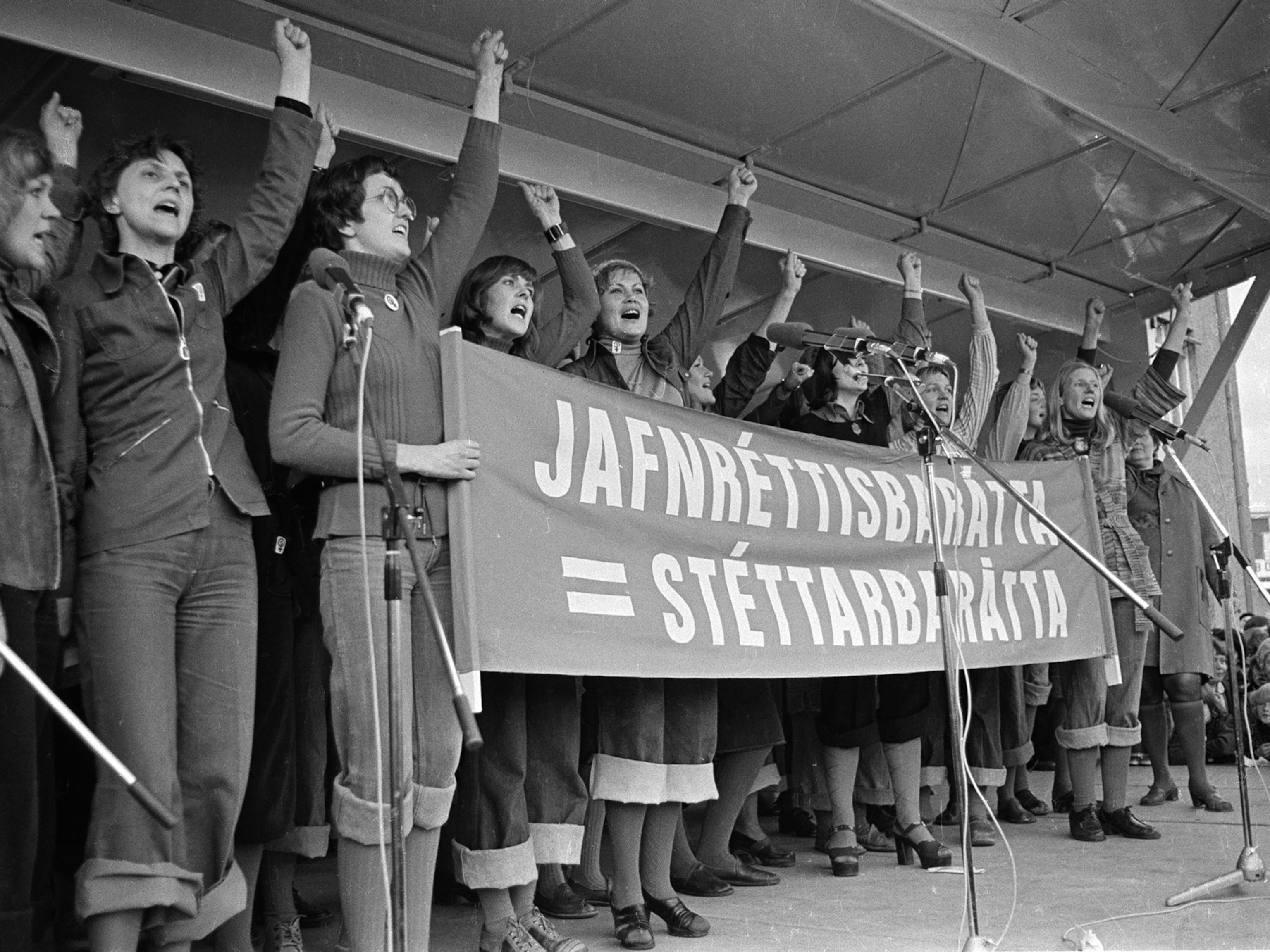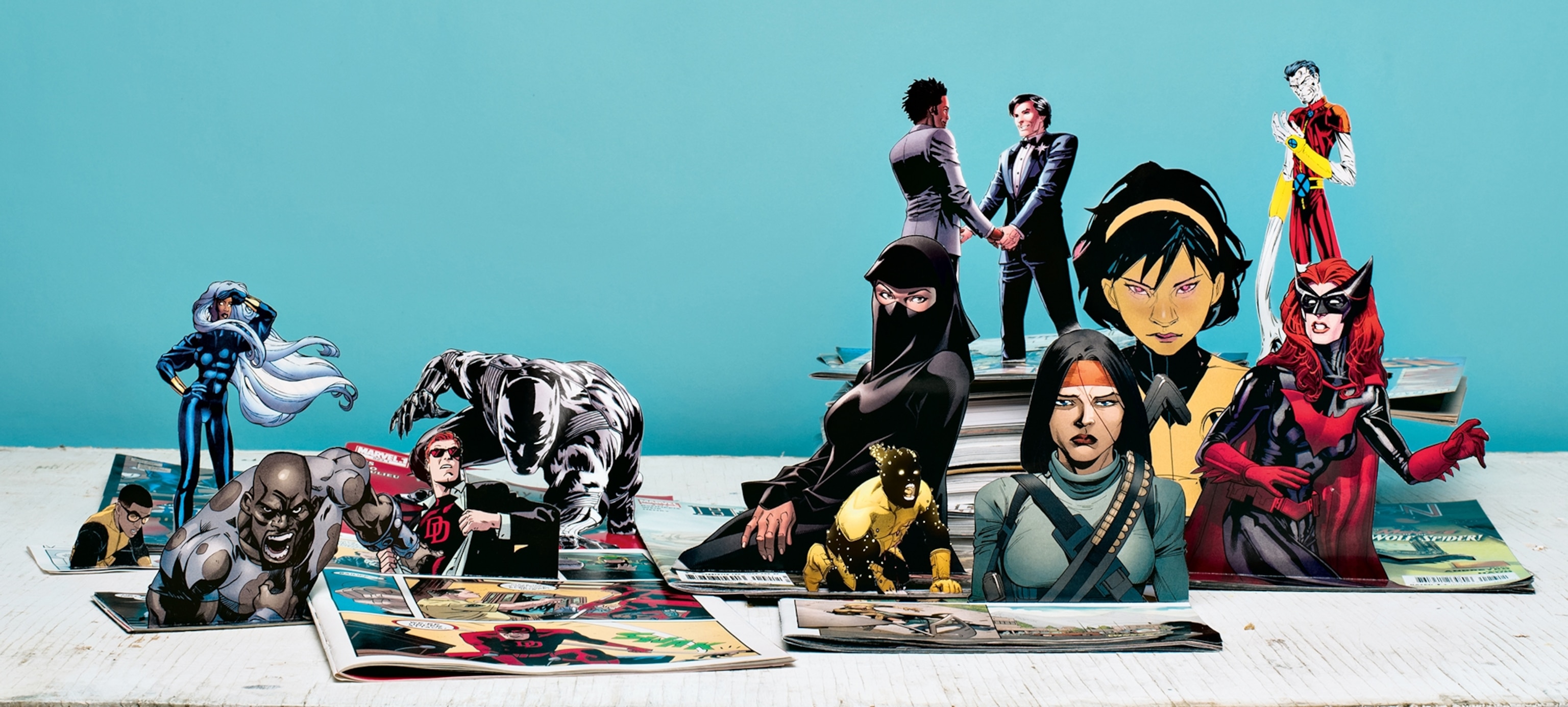
Comics Color Outside the Lines, Drawing a Diverse Cast of Heroes
Graphic novels and comic books now feature an inclusive pantheon of heroes, from LGBT figures to a black Spider-Man and a female Thor.
Bam! Thwak! Pow! Diverse superheroes are giving old stereotypes a beating.
As comic book and graphic novel sales in North America cracked one billion dollars in 2015, nontraditional characters—racial and cultural minorities, women, LGBT figures—are becoming major players. Some heroes in this inclusive pantheon are new. But well-known characters and brands are also getting a makeover: Marvel now has a black Spider-Man and a female Thor; Archie Comics’ multiracial character Harper is disabled; DC’s Wonder Woman recently officiated at a lesbian wedding.
Industry analyst Milton Griepp says once marginalized groups started appearing regularly in mainstream comics about 10 years ago. The rise of manga, with its heavily female readership, and the recent superhero films of Hollywood have been catalysts for the change, he says. So have shifts in popular culture, laws, and demographics, and the ubiquity of the Internet.
It’s not the first time superheroes have evolved. In fact, the latest changes are part of a continuum, says Ramzi Fawaz, author of The New Mutants: Superheroes and the Radical Imagination of American Comics. In the 1950s and ’60s, writers and artists—mirroring and grappling with societal upheaval—began to feature outcasts and countercultural figures. In the following decades, identity politics and environmental issues joined the fray as well.
Today diverse characters have diverse creators. Steve Orlando, a bisexual writer, says his gay superheroes, Midnighter and Virgil, aren’t just trailblazers; they’re also “human and relatable.”
“People tell me that Midnighter gave them the strength to be who they are,” he says. “Some had waited their whole life for a character that looks like them. And that’s what everyone deserves—a Peter Parker–style moment where you say, Hey, that guy’s just like me. And that guy’s a hero. Maybe I could be a hero too.”
